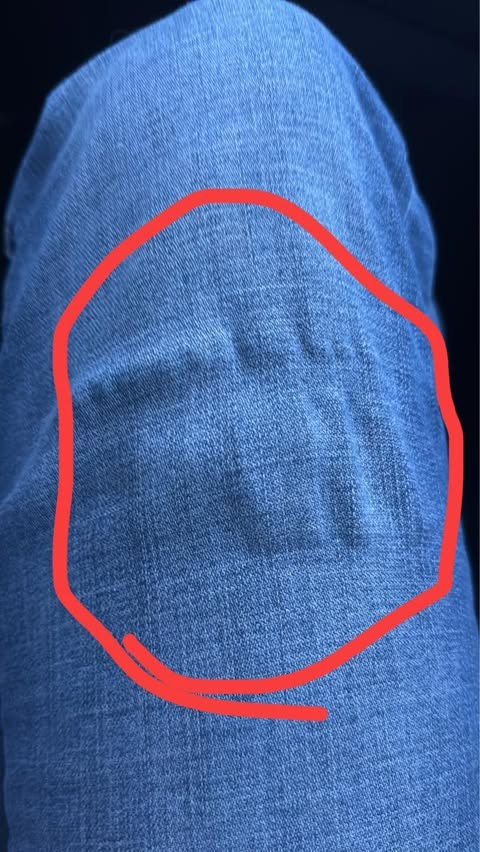If you’ve ever pulled your favorite pair of jeans out of the laundry only to find strange ripples, wrinkles, or puckering across the fabric, you’re not alone—and you’re definitely not imagining things. It’s incredibly frustrating to see a once-smooth and perfectly fitting pair of jeans look like it’s been through a washing machine warzone. One day, they hug your curves just right; the next, they look lumpy, misshapen, and like they aged ten years overnight. But rest assured, this isn’t just some random laundry fluke. There are real reasons this happens, and most of them come down to how jeans are made and how we care for them. The modern denim you’re wearing likely contains some stretch material—usually Lycra or elastane—which adds flexibility and comfort but also makes the fabric more delicate and prone to damage. One of the biggest enemies of stretch denim is heat, but that’s only part of the story. Everything from how you wash, dry, and even store your jeans can affect their shape and texture.

So what exactly causes your jeans to come out of the wash looking like a wrinkled mess? The first major factor is heat. While jeans aren’t typically made of just cotton anymore, that added Lycra doesn’t take kindly to high temperatures. When exposed to heat—whether from a hot water cycle or a blast in the dryer—those synthetic fibers start to break down. And unlike cotton, which tends to shrink evenly, Lycra shrinks unevenly, causing puckering in random spots. Once those fibers lose elasticity, there’s really no getting it back. Overwashing your jeans only makes things worse. Most of us are tossing our denim into the wash far more often than we need to, which accelerates wear and tear. Experts suggest washing jeans only when absolutely necessary to preserve both color and structure.
Another culprit? The motion of your washing machine. Denim doesn’t just sit quietly in the washer—it gets twisted, stretched, and tangled with other clothes. This rough treatment pulls on the fabric, especially the stretch fibers, causing certain areas to stretch out while others contract. That twisting leads to warped seams and misshapen legs, especially in skinny jeans or jeggings, which rely heavily on those stretchy components. And don’t forget how jeans absorb water. Denim is naturally heavy, and when it soaks up water, it becomes unevenly saturated. Stretchy jeans don’t always absorb water uniformly, which can cause uneven drying and warping as the fabric contracts at different rates. Add to that the bad habit of overloading your washer or dryer, and you’ve got a recipe for disaster. When your jeans are crammed into the machine with too many other items, they don’t get to tumble freely. Instead, they bunch up and dry in odd positions, locking in those unattractive ripples and wrinkles.
The good news? You don’t have to give up on your favorite jeans. A few simple changes to your laundry routine can go a long way. Start by washing your jeans in cold water only. Heat is the number one enemy of Lycra, and cold water is much gentler on the fabric. Next, skip the dryer altogether when you can. Air-drying is best for preserving the shape of stretch denim. If you absolutely must use the dryer, choose the lowest heat setting and remove the jeans while they’re still slightly damp. Hang them up to finish drying naturally and help prevent stiff creases. Washing jeans inside out is another easy trick. It helps minimize friction in the washer, reducing both fading and unwanted stretching. Use a gentle cycle—or even better, hand wash them—especially for expensive or tight-fitting jeans you want to keep looking new. Give your jeans room in the washer; don’t crowd them. They need space to move around or else they’ll dry twisted and wrinkled. When they come out of the washer, don’t just toss them in the dryer as-is. Take a minute to reshape them—lay them flat, smooth out bunches, and tug gently at any warped areas. Hanging jeans by the waistband while they air-dry can also help prevent odd creases.
And while it might be tempting to throw in a scoop of fabric softener, go easy on it. Fabric softeners coat fibers and can actually reduce the elasticity of Lycra over time. If your jeans are already puckered, there are a few fixes you can try. Use a clothes steamer to gently loosen and relax the fabric. Don’t have a steamer? Hanging them in a steamy bathroom works, too. Another method is to use a damp cloth and iron the rippled areas on low heat. Or try stretching the fabric gently by hand while it’s still damp to reshape it. Sometimes rewashing your jeans the right way—cold water and gentle drying—can help undo some of the damage. In the end, those ripples aren’t a fluke—they’re the result of fabric stress from heat, overwashing, or improper handling. But with a few small tweaks to how you wash and dry your jeans, you can keep them looking sharp, smooth, and just as good as the day you bought them.





